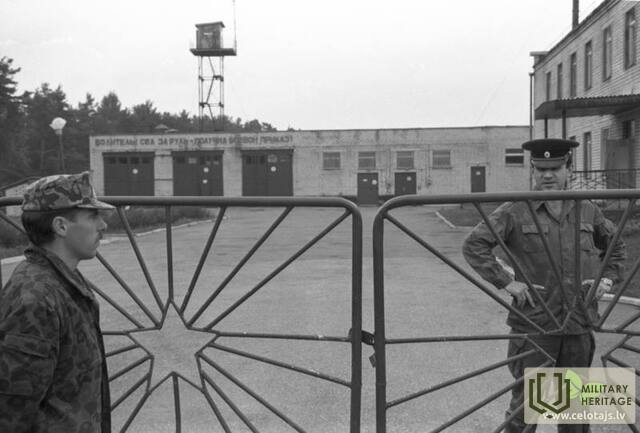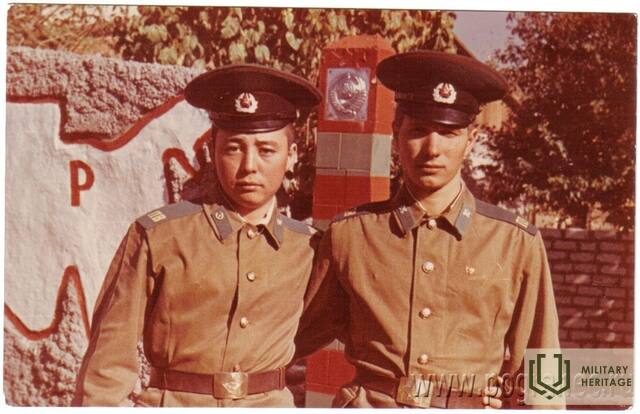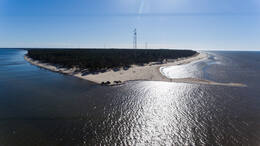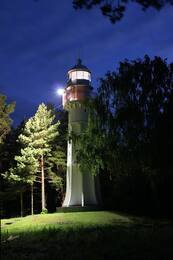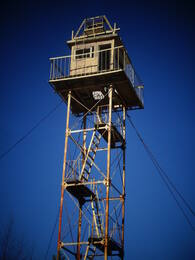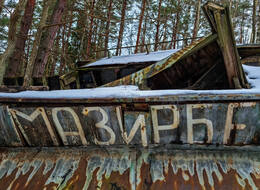Apie Kolkos pakrantės pasieniečius
Kolkiškietės Valijos Laukšteinės prisiminimai apie laikus Kolkoje, kai buvo pasieniečiai.
"Gimiau kolūkiečiu, anūkas bus penktos kartos. 1954 metais baigiau vidurinę mokyklą, įstojau į Kaliningrado maisto technologijos universitetą, bet viskas buvo rusų kalba, studijas nutraukiau, nes ištekėjau ir nenorėjau toliau mokytis. Pradėjau dirbti Žuvies perdirbimo fabriko laboratorijoje, tada perėjau į žuvininkystės artelį, iki pensininko, iki tol. 1991. Gyvenau name „Sārnati“, kurį pastatė kolūkis (1962 m.), tada nusipirko ir apmokėjo mano tėvas. Čia taip pat anksčiau buvo senas namas, vienas pirmųjų senų ūkių Kolkoje.
Per karą buvome išvažiavę, evakavomės netoli Dundagos Ažuose, kur gyveno mamos tėvo brolis. Mano tėvas irgi per karą gavo leidimą iš vokiečių, nes buvo žvejys ir žvejojo. Į Kolką grįžome prieš 1945 m., nes karas dar nesibaigė. Ne visos šeimos buvo evakuotos.
Kai pradžioje įėjo pasieniečiai, na... Aš jau buvau mažas, tai buvo iškart po karo, man buvo 10-11 metų. Buvo didelis skirtumas, nes prieš tai čia gyveno vokiečiai, o paskui iškart sekė rusai. Vokiečiai buvo galantiški. Rusai atėjo iškart po karo, ir jų vaizdas buvo kitoks nei nugalėtojų. Eiliniams reikėjo suteikti kambarius apsistoti, nes jie neturėjo kur gyventi, kol nebuvo pastatytos kareivinės. Su mumis gyveno dvi moterys Galina ir Polina, kurios abi buvo valčių savininkės. Ir tada mums prasidėjo linksmybės, visos valtys buvo surinktos įlankos pusėje, tvora ratu, kiekviena valtis buvo prirakinta prie stulpo, rakto, numerio. Viršuje buvo pasieniečių postas, tada žvejai turėjo eiti užsiregistruoti, gauti leidimą, išplaukti į jūrą, tada atgal. Tėvas iš pradžių buvo kolūkio pirmininkas, paskui brigadininkas, esame žvejai. Į paplūdimį visi negalėjo eiti kaip nori, tik ten, kur buvo leidžiama.
Patikrinti į namus atvyko ir pasieniečiai; senoje namų knygoje yra įrašai apie patikrinimų atlikimo datas ir laikus. Patikrino, ar namuose nėra svetimų žmonių. Vyresnysis brolis buvo pašauktas į vokiečių kariuomenę, o po karo gyvena Kanadoje. Todėl buvome laikomi nepalankia šeima. Vieną vakarą atėjo pas mus senukas, tikriausiai buvo atsiųstas, kalbėjo latviškai ir prašė nakvynės, bet nepažįstamiems buvo neleidžiama, apie nepažįstamus reikėjo nedelsiant pranešti į zastavą (paštą). Nepamena, kad apie tai pranešėme pasieniečiui, bet ten buvo pasieniečiai ir jį uždarė į areštinę. Kitą rytą pasieniečių viršininkas padėkojo tėčiui: „Ačiū, Aleksandr!“, taip tapome patiklesni. Ventspilyje jie turėjo štabą, iš kur tvarkė reikalus ir išsiuntė patikrinimus.
Mūsų pradinė mokykla buvo šalia pašto. Merginos yra mergaitės, jos taip pat yra jauni berniukai, dažnai kartu žaidžiame kamuolį. Mūsų mokytojas buvo Bernsteins, buvo jau 1949 metai ir vyko trėmimai, pasieniečiai jau visus išsivežė ir išvežė į kalėjimą. Bet mes tokie jauni ir toliau susitinkame ir kalbamės su pasieniečiais. Mokytoja tikrai ant mūsų supyko, sakydama „iš Kolkos vyrus renka, o jūs čia tik kikenat“.
Vėlesniais laikais pasieniečių vadas visada dalyvaudavo eiliniuose Vasario 23-iąją vykusiuose Sovietų armijos dienos paminėjimo paraduose.
Pasieniečiai buvo įvairių tautybių, vienas buvo totorius, paskui lietuviai, rusai, baltarusiai, iš visos Sovietų Sąjungos. Nepamenu nė vieno latvio. Bendravome rusiškai. Daugelis pasieniečių taip pat yra vedę latvius. Ten buvo graži mergaitė, vardu Kristiņa, ji ištekėjo už viršininko Beļavino ir liko gyventi čia, dabar Rygoje. Tačiau kelios iš jų ištekėjo, kitos merginos išvyko su vaikinais.
Kolkoje tuo metu buvo dvi bažnyčios – liuteronų ir stačiatikių, bet tuo metu į ją nebuvo leidžiama eiti, nes įdėmiai žiūrėjo žmonės iš mokyklų ir darboviečių. Dauguma jaunuolių jau buvo pionierių, komjaunimo, o paskui partijos nariais, ir tai jau nebuvo leidžiama. Buvo tokių, kurie ėjo tyliai, bet paskui sulaukė papeikimų.
Kai kaime vykdavo šventės, pasieniečiai ateidavo į balius. Balėlis vyko kultūros centre, bet šokiai vyko ir viršuje, gamykloje. Į vakarėlius jau ateidavo tie, kurie buvo gavę leidimą, bet jie jau turėjo savo režimą, tam tikru laiku turėjo būti namuose. Iškyšulyje buvusiems jūreiviams režimas buvo laisvesnis. Sporto šventėje dalyvavo ir buriuotojai, ir pasieniečiai.
Ventspilyje buvo štabas, tuomet iš Ventspilio į Kolką koncertuoti važiavo pasieniečiai, o pasiklausyti eidavo ir vietiniai gyventojai. Tada buvo vakarėliai. Mano viršininkas taip pat įsimylėjo vieną iš Ventspilio merginų, jiedu susirašinėjo ilgai.
Daug šeimų iš Lielirbės persikėlė į Kolką, tikriausiai dėl to, kad ten buvo statoma raketų bazė.
Kolkoje priešais kultūros centrą ir toliau buvo įrengtos dvi maudymosi aikštelės, kuriose vietiniams buvo leista maudytis. Visą laiką vaikščioti pajūriu nebuvo leidžiama, todėl reikėjo gauti pašto leidimą ir pasakyti, kur eini. Kai kur nors vykstame, visada priekyje yra patikros punktas, visada su savimi turime turėti pasą, be jo negalime žengti nė žingsnio. Jei kas nors ateidavo pas mus į svečius, turėdavo eiti ir užsiregistruoti į policijos komisariatą, nors turėjo leidimą. Taip pat yra buvę, kad patys važiuojame į Mazirbę ir Saunage yra pasienio kontrolė. Jei kas paso su savimi neturi, nuneša į postą ir laukia, kol paskambins ir sužinos, ar tas žmogus gyvena Kolkoje, tada gali judėti toliau. Kontrolė buvo griežta, apie viską reikėjo pranešti, kitaip atrodysi nepalankiai. Kaime jau buvo tinkuotojų, kurie viską prižiūrėjo, jų buvo daug, nežinia, ar mokėjo. Mano vyras buvo mano vairuotojas, veždavo darbuotojus dirbti į Atlantą, o prie jo visada privažiuodavo vienas iš pasieniečių. Jis dažnai to neslėpdavo ir sakydavo: „Šiuose namuose turime ką nors, kas mums praneša“. Teritorija buvo padengta tinku.
Pasieniečiai turėjo ir šunų. Jūrmala buvo atitverta ir kiekvieną rytą eidavo tikrinti pasieniečiai su šunimis, šunys ieškodavo pėdsakų, karts nuo karto būdavo sargybos bokšteliai (bokštai), juose budėdavo sargybiniai, keisdavosi tam tikru laiku. Prieš Vaidę buvo vadinamas Žaliasis bokštas. Buvo punktas Melnsiloje, didelis punktas Rojoje, nes ten dideli laivai išplaukė į jūrą. Filialai buvo Melnsiloje, Kolkoje, Saunagoje, dėl kitų nežinau.
Gyventojai į kalėjimą nebuvo įleisti. Prie vartų stovėjo sargas, buvo perėja, didelė tvora ratu, jei ko reikėdavo, iškviestum viršininką į lauką. Na, o jei tave sugautų, tave į vidų nuvestų pas bosą, bet tai jau kita istorija. Kurį laiką forpostas buvo įsikūręs dvaro pastate prie bažnyčios, o šalia veikė mokykla. Langai į forpostą buvo užmūryti, mums neleido matyti, kas ten vyksta, tai buvo karo paslaptis.
Iš pradžių pareigūnai ir jų šeimos gyveno pas eilinius. Visai šalia mūsų gyveno karininko šeima, jo žmona buvo gydytoja, jis buvo posto viršininkas. Vėliau buvo pastatytas naujas forpostas su kareivinėmis ir karininkų namais, tada ten persikėlė karininkų šeimos. Kareivinės iki šių dienų neišliko“.
<iframe width="640" height="480" src="https://latviainside.com/explore/tours/aero/kurzeme/360/virtualtour.html?fbclid=IwAR0eKPnc-9Q5dytnf6Kr0Est6RS0ClHpsH1rhYKQjU8Gz8" frameborder="0" allowfullscreen></iframe>
Susijusi laiko juosta
Susijusios vietos
German army coastguard searchlight site in Usi and border guard post in Kolka
No military infrastructure was planned in Cape Kolka, except for several offshore lighthouses that were rebuilt over a long period of time, either before World War I, during World War I or during World War II. Coastal defence batteries were planned for the narrowest part of the Irbe Strait, between the Sirves Peninsula and the Michael Tower Lighthouse.
The only fortifications of a military nature appeared at the end of 1944, when the German Army Group North was preparing to repel possible landings by the Soviet Baltic Fleet. In the spring of 1945, after the ice retreated, two batteries of the 532nd Artillery Division defended the coast at Cape Kolka. Battery 7 with four 75 mm guns and three 20 mm zenith guns. Battery 8 with four 88 mm mortars, three 20 mm mortars and an 81 mm mortar. The anti-deserter infantry garrison consisted of one of the most famous coastal defence units of the German Navy, the 5th Company of the 531st Artillery Division. Although it was an artillery unit by name, it was an infantry unit by deployment, which started its war in June 1941 at Liepāja. The unit was then garrisoned on islands in the Gulf of Finland and later took part in the fighting on the island of Saaremaa. The remnants of the division were reformed into one company and, reinforced with seven anti-tank guns and three 20 mm anti-aircraft guns, deployed at Cape Kolka.
The Soviet naval landing operation never took place and the German units capitulated in May 1945.
The military infrastructure in Cape Kolka began to be built after the Second World War, when Soviet border guard posts were deployed here and Kolka, like the entire Kurzeme coast from Mērsrags to the Lithuanian border, became a closed zone
Mērsrags lighthouse and former border guard
Mērsrags Lighthouse is located in the Mērsrags village, about 1 km north of the village centre. The lighthouse was put into commission in 1875. It is an 18.5 m tall freestanding, cylindrical, riveted iron tower, the lower part of which has been fortified with reinforced concrete counterforts. The height of the signal light is 21.3 m. At the top all around the tower there is an iron balcony supported by consoles. The lighthouse tower was made by Sotera, Lemonier & Co in Paris, so this lighthouse is commonly known as the ‘Frenchie’. At the end of 1944, the 1003rd Artillery Division Battery of the German Army with 60 cm spotlights was located right next to the lighthouse. In May 1945, the Nazi Germany high command planned to move the 15th Latvian SS Grenadier Division to the area, but these plans failed, because Latvian soldiers surrendered to the Western Allies. Near the Mērsrags Lighthouse there are still remains of a building where during the USSR times Soviet border guards had a large, extendable spotlight for illuminating the sea. There is a bird-watching tower next to the lighthouse. Tours need to be booked beforehand by contacting the Mērsrags Tourism Information Centre.
Soviet border guard post in Jūrmalciems
After the Second World War, Latvia had various prohibitions in border and coastal areas. From 19 June 1945, fishermen were assigned piers, which were fenced off with barbed wire, guarded by patrols and watchtowers. On 4 September 1946, the prohibited coast guard zones on the Western border of the LSSR were introduced.
In Jūrmalci village there is a former border guard control post, a tower and a tractor proudly rocking on the beach! How it got there is something to ask the local guides!
A fabulously beautiful and interesting place - both with its Soviet-era aura and the charm of the seashore.
Mazirbe border guard tower
The Soviet border defence post was located in the building that used to be a maritime school, and next to it is a well-preserved Soviet border guard watchtower. The second watchtower is located right on the shore next to a parking lot. These watchtowers are a reminder of the Soviet occupation and the times when Mazirbe was a closed border area and civilians were allowed on the shore only in specially designated places and only during the daytime. This border guard watchtower is one of the best-preserved objects of its type on the coast of Latvia. However, it designated is dangerous to climb it.
Mazirbe boat cemetery
Mazirbe, historically known as the largest Liv centre, is notable for the only fishermen's boat cemetery on the Latvian coast. It was built in the 1960s, the last boats were brought in 1976. The boats ended up here as a result of both fishing restrictions and age.
Today, Mazirbe has less than ten wrecks of fishing boats, but historically there have been many more. Boats have been laid to rest in other seaside villages, but it is in Mazirbe's boat graveyard that this is most evident today.
The Mazirbe Boat Cemetery is the only one of its kind on the Latvian coast.




